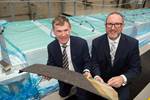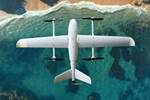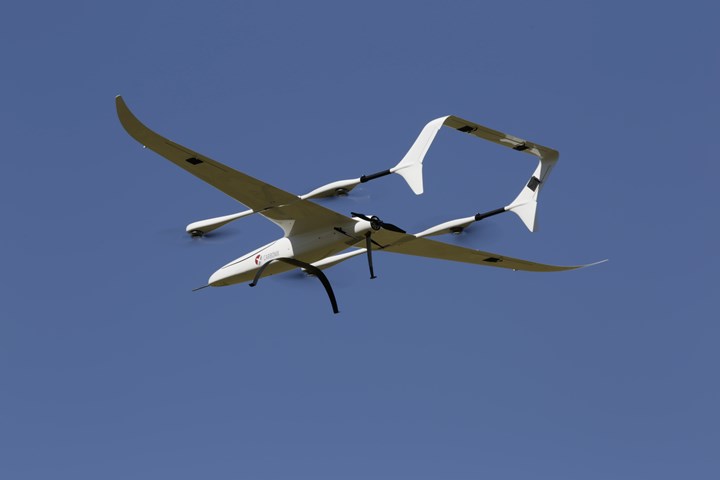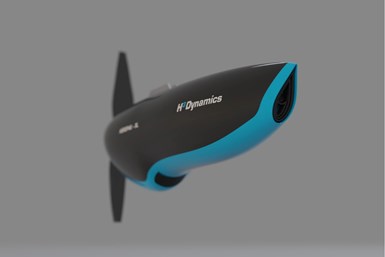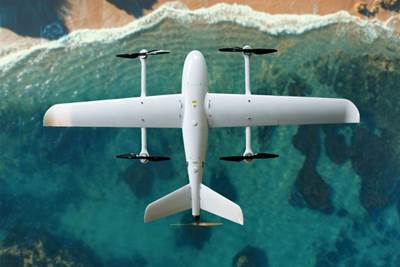H3 Dynamics, Carbonix to build Australia’s first hydrogen VTOL unmanned aircraft
Innovations in hydrogen-electric nacelles will be integrated into Carbonix’s existing fleet of composite aircraft to mature, further promote hydrogen adoption for long-distance, uncrewed flight in Australia.
H3 Dynamics (Pflugerville, Texas, Paris, France and Singapore) and Australian unmanned aerial vehicle (UAV) producer Carbonix (Sydney, Australia) are coming together to begin development and production of what is reported to be the first Australian hydrogen-electric vertical takeoff and landing (VTOL) unmanned aircraft system (UAS). Carbonix has extensive expertise in advanced composite manufacturing, aerostructure design and control systems for vertical and landing capabilities. H3 Dynamics has been working on cutting-edge hydrogen UAV technology for more than 15 years, and has just released a novel hydrogen-electric nacelle technology.
Compared to batteries, hydrogen electric systems will increase flight durations by several orders of magnitude. This range elongation will support Carbonix’ existing long-distance linear inspection applications such as grid lines and pipelines, mining industry mapping and surveying across large expanses of land — which continue to rely on the use of expensive helicopters or light aircraft. The partnership also aligns with Australia’s broader hydrogen and decarbonization plans.
H3 Dynamics will be integrating its off-the-shelf hydrogen systems to Carbonix’s existing fleet of small, unmanned VTOL systems, enabling training and accelerating field experience. Carbonix’s next-generation H2-VTOL UAV, for example, is making use of H3 Dynamics’ hydrogen-electric nacelle technology, with a first-in-flight milestone announced several days ago. H3 Dynamics’ patented distributed hydrogen-electric propulsion technology is said to liberate the main fuselage, making room for bigger sensors or more cargo for autonomous delivery covering long distances, such as making medical deliveries to remote communities in Australia.
“Creating intelligent long-range aerial systems enabling reliable and effective access to critical remote data while respecting the environment is key to us,” Philip Van der Burg, Carbonix CEO, emphasizes. “We will work with H3 Dynamics to complete the hydrogen value chain for several rapidly growing UAV segments, and to do it much more quickly — right here in Australia.”
H3 Dynamics’ new aerodynamic hydrogen-electric propulsion nacelles adds endurance to battery-electric fixed-wing or VTOL drones.
Range elongation also means flying beyond visual line of sight (BVLOS), the regulatory edge of the global commercial UAS sector. With its massive land mass and low population density, Australia is indeed an ideal global experiment base for BVLOS operations.
In September 2022, H3 Dynamics announced its Australian BVLOS plans with Ripper Group in Australia, a Carbonix drone operator, starting with the deployment of fully autonomous drone stations capable of BVLOS operations across multiple sites, in applications ranging from mining to solar farm surveying, wildlife and ocean protection and life saving. Introducing BVLOS drone stations was initiated earlier, to help ease regulatory approvals for more capable hydrogen VTOL drones, such as the ones Carbonix are working on.
“We are convinced unmanned systems are the evolutionary starting point to increasingly large hydrogen-powered flight platforms, where testing, certification and regulatory approval challenges vary based on aircraft weight,” Taras Wankewycz, CEO and co-founder at H3 Dynamics, says. “H3 Dynamics’ plan is to increase the size of hydrogen airframes every year until we are able to fly passenger-scale aircraft. We want to mature airborne hydrogen technology in today’s existing uncrewed aviation markets as a first essential step towards that vision.”
The full solution will be made in Australia in close partnership with ASX-listed Quickstep (New South Wales, Australia), one of the region’s largest independent aerospace composite companies, which is also the manufacturer of Carbonix UAV frames. Quickstep has an ongoing development program for intelligent composite hydrogen storage solutions, which could also soon be applied commercially in H3 Dynamics’ hydrogen fuel cell nacelles for hydrogen flight.
Related Content
Thermoplastic composites welding advances for more sustainable airframes
Multiple demonstrators help various welding technologies approach TRL 6 in the quest for lighter weight, lower cost.
Read MoreCryo-compressed hydrogen, the best solution for storage and refueling stations?
Cryomotive’s CRYOGAS solution claims the highest storage density, lowest refueling cost and widest operating range without H2 losses while using one-fifth the carbon fiber required in compressed gas tanks.
Read MoreThe state of recycled carbon fiber
As the need for carbon fiber rises, can recycling fill the gap?
Read MoreCarbon fiber in pressure vessels for hydrogen
The emerging H2 economy drives tank development for aircraft, ships and gas transport.
Read MoreRead Next
National manufacturing center for FRP infrastructure opened in Australia
Four-year program between Sustainable Infrastructure Systems, InfraCore leads to internationally certified composite bridge, jetty, wharf, pontoon and lock gate manufacture, research in recycled materials.
Read MoreH22S project will develop, trial Australia’s first hydrogen-propelled drone
Swinburne’s AIR HUB will bring together industry, research and education for design and integration of a novel hydrogen propulsion system, driving decarbonization, and regulatory and operational developments.
Read MoreFrom the CW Archives: The tale of the thermoplastic cryotank
In 2006, guest columnist Bob Hartunian related the story of his efforts two decades prior, while at McDonnell Douglas, to develop a thermoplastic composite crytank for hydrogen storage. He learned a lot of lessons.
Read More

